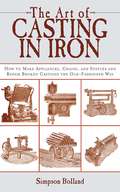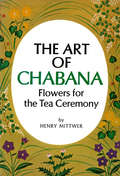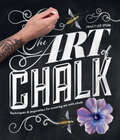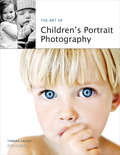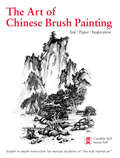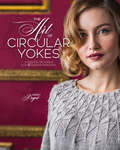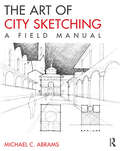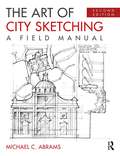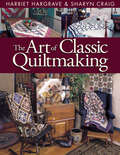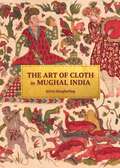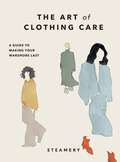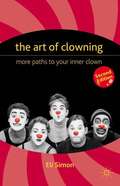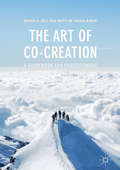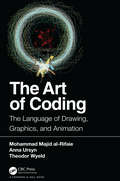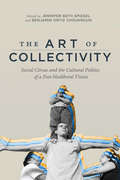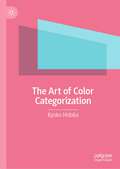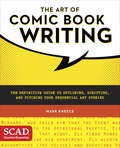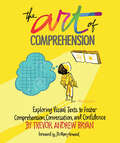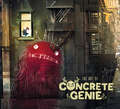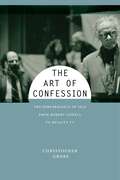- Table View
- List View
The Art of Casting in Iron: How to Make Appliances, Chains, and Statues and Repair Broken Castings the Old-Fashioned Way
by Simpson BollandFirst published in 1893, The Art of Casting in Iron has since made its mark in the field of blacksmithing, offering handymen everything they need to know to make appliances, chains, and statues and repair broken castings the old-fashioned way. From founding statues and the art of taking casts to pattern modeling and sectional molding, this practical guidebook provides all of the need-to-know basics and more. Included in this book is information on: The measurement of castings Pouring and feeding Gear molding machines Foundry equipment and appliances Mixing cast iron Burning, chilling, and softening And much more! With simple, easy-to-understand instructions and detailed formulas, tables, and illustrations, The Art of Casting in Iron guides the reader step-by-step through the iron casting process, making it the perfect companion for novice metal founders and industry professionals alike.
The Art of Chabana
by Henry MittwerChabana is a simple arrangement of floral or other plant material traditionally placed in the tokonoma, or alcove, of the room in which the tea ceremony is performed. There are no rules in arranging Chabana, the author tells us, no specail measurements or geometric patterns, Rather, the creator of a Chabana must use his imagination and, most of all, a special inspiration from within. The author does give some practical guidelines, however, on the minutiae of arranging a Chabana. And he discusses in length more than 100 flowers that are suitable for Chabana, explaining exactly how they can be used and the most appropriate seasons for their display. The book includes a complete list of plants with names in English, Japanese, and Latin.
The Art of Chalk: Techniques & Inspiration for Creating Art with Chalk
by Tracy Lee StumThe award-winning street painter provides inspiration for and demystifies the processes of chalkboard art, pastel painting, and street painting.Chalk, a ubiquitous and versatile implement made from limestone, is much more than a humble tool for jotting impermanent notes. With a wide range of uses in art and design, chalk is quickly becoming a favorite of artists around the world to create impressive works of art.In The Art of Chalk, noted street painter Tracy Lee Stum takes an inspiring look at the many exciting creative applications for this easily accessible medium. With a historic overview of chalk’s origins as an art medium, and how its artistic uses have evolved over the centuries, this book is a wealth of knowledge for anyone looking to get creative with this time-honored art medium.Featuring the impressive work of some of today’s most prominent artists and designers, The Art of Chalk explores helpful and inspiring techniques used in typography and lettering, fine art, and the intricate, elaborate, and mind-bending chalk designs known as street art. In the resources section, you’ll even find a detailed listing of chalk festivals held around the world.
The Art of Children's Portrait Photography
by Tamara LackeyContemporary photographs that cleverly capture a child’s mood or personality#151;whether that’s a big, toothy grin or a teary tantrum#151;are easily created with the tips and techniques explored in this in-depth handbook. Often called #147;lifestyle photography,” modern techniques such as tightly cropped close-ups, vignettes, wide angles, and shallow depths produce images that are markedly less stiff and more expressive than traditional portraitures. From capturing great expressions and body language to integrating meaningful locations into the shoot to further express the subject’s personality, this guide thoroughly explains how photographers can develop their image-storytelling skills to develop stunning portraits. Advice on creating platinum and chocolate hued prints, vibrant color scenes, simple grayscale images, and utilizing unusual textures or effects is also included.
The Art of Chinese Brush Painting
by Caroline Self Susan SelfChinese ink painting is an offshoot of calligraphy and is a beautiful and reflective art that's been revered in China for centuries. A wonderfully creative tool, this book is an excellent way for newcomers to experience this ancient art form.Traditional black-and-white Chinese ink painting elements, along with the tradition's essentials--such as the quality and variety of the tools and accessories used in its practice are all covered. The Art of Chinese Brush Painting encourages readers to be mindful of the principles of composition and perspective, and introduces specific techniques for several different elements, including Chinese Zodiac animals and landscapes.
The Art of Chinese Brush Painting
by Susan Self Caroline SelfChinese ink painting is an offshoot of calligraphy and is a beautiful and reflective art that's been revered in China for centuries. A wonderfully creative tool, this book is an excellent way for newcomers to experience this ancient art form.Traditional black-and-white Chinese ink painting elements, along with the tradition's essentials--such as the quality and variety of the tools and accessories used in its practice are all covered. The Art of Chinese Brush Painting encourages readers to be mindful of the principles of composition and perspective, and introduces specific techniques for several different elements, including Chinese Zodiac animals and landscapes.
The Art of Chinese Brush Painting
by Susan Self Caroline SelfChinese ink painting is an offshoot of calligraphy and is a beautiful and reflective art that's been revered in China for centuries. A wonderfully creative tool, this book is an excellent way for newcomers to experience this ancient art form.Traditional black-and-white Chinese ink painting elements, along with the tradition's essentials--such as the quality and variety of the tools and accessories used in its practice are all covered. The Art of Chinese Brush Painting encourages readers to be mindful of the principles of composition and perspective, and introduces specific techniques for several different elements, including Chinese Zodiac animals and landscapes.
The Art of Circular Yokes: A Timeless Technique for 15 Modern Sweaters
by Kerry BogertKnit a masterpiece! Discover the how yarn and needles become artistic tools when you work on the beautiful canvas of a circular yoke. The timeless technique of knitting sweaters with nearly invisible shaping allows for painterly colorwork, illustrative lace, beautifully chiseled cables, and so much more. Open the pages of The Art of Circular Yokes to find: • Detailed information on the math behind circular yokes and how to achieve a more customized fit from designer Holli Yeoh. Plus insights into designing your own original patterns. • Curated collection of 15 stunning circular yoke pullovers and cardigans from some of your favorite designers--including Jenn Steingass, Kate Gagnon Osborn, Jennifer Wood, Andrea Cull, and others. • Projects that once knit become treasured keepsakes for years to come.No handknit wardrobe is completely with one of these iconic sweaters. With The Art of Circular Yokes you have everything you need to make an heirloom for your collection.
The Art of City Sketching: A Field Manual
by Michael AbramsThe Art of City Sketching: A Field Manual guides you through the laborious and sometimes complex process of sketching what you see in the built environment so that you can learn to draw what you imagine. Illustrated with hundreds of drawings by students and professionals of cityscapes around Europe and the United States, the book helps you develop your conceptual drawing skills so that you can communicate graphically to represent the built environment. Short exercises, projects, drawing tips, step-by-step demonstrations, and composition do's and don'ts make it easy for you to get out into the city and experiment in your own work. Author Michael Abrams uses his experience as a field sketching instructor, to show you that by drawing, you can discover, analyze, and comprehend the built environment.
The Art of City Sketching: A Field Manual
by Michael C. AbramsThe Art of City Sketching: A Field Manual guides readers through the process of freehand architectural sketching and explains orthographic, diagrammatic, three-dimensional, and perceptual-type drawings. The book presents hundreds of drawings of historic buildings and urban spaces, examples, and exercises, which help readers develop their drawing skills and employ sketching as an analytical tool. The book is divided into three parts, based on the reader’s skill level: beginner, intermediate, and advanced. As an architect and field sketching instructor, the author shows that through drawing the reader can discover, analyze, and comprehend the built environment. The new edition of The Art of City Sketching expands on the drawing techniques of the previous version by adding new drawing examples, exercises, and two new chapters—Chiaroscuro and Storyboard. New drawing tips, demonstrations, and composition "do’s and don’ts" will support readers when they illustrate their viewpoint of the city by using simple drawing tools. The lessons in this book will allow readers to mix method with imagination and sensibility.
The Art of Classic Quiltmaking: The Ultimate How-to Book For Quilters!
by Harriet Hargrave Sharyn CraigThe ultimate how-to book for quilters—a workbook with exercises that provide a foundation of much-needed basics to set you on your quilting path. Two of quilting&’s most respected teachers combine their different styles to present an incredible reference and project book that beginners and experienced quilters alike will always keep near the sewing machine! Loaded with the information you need to make traditional quilts, including selecting and caring for fabric, choosing equipment and supplies, calculating yardage, selecting the piecing technique that ensures the best result, designing borders, and deciding on quilting designs. Designed for those who encounter problems with quilting basics, from confident beginners to experienced quilters. Master piecing methods with step-by-step exercises, helpful hints, illustrations, and photos. Project quilts accompany each basic technique chapter. Numerous variations of the techniques are also presented. Find out how to answer questions such as &“where do I go next?&” or &“what went wrong?&”
The Art of Cloth in Mughal India
by Sylvia HoughtelingA richly illustrated history of textiles in the Mughal EmpireIn the sixteenth and seventeenth centuries, a vast array of textiles circulated throughout the Mughal Empire. Made from rare fibers and crafted using virtuosic techniques, these exquisite objects animated early modern experience, from the intimate, sensory pleasure of garments to the monumentality of imperial tents. The Art of Cloth in Mughal India tells the story of textiles crafted and collected across South Asia and beyond, illuminating how cloth participated in political negotiations, social conversations, and the shared seasonal rhythms of the year.Drawing on small-scale paintings, popular poetry, chronicle histories, and royal inventory records, Sylvia Houghteling charts the travels of textiles from the Mughal imperial court to the kingdoms of Rajasthan, the Deccan sultanates, and the British Isles. She shows how the “art of cloth” encompassed both the making of textiles as well as their creative uses. Houghteling asks what cloth made its wearers feel, how it acted in space, and what images and memories it conjured in the mind. She reveals how woven objects began to evoke the natural environment, convey political and personal meaning, and span the distance between faraway people and places.Beautifully illustrated, The Art of Cloth in Mughal India offers an incomparable account of the aesthetics and techniques of cloth and cloth making and the ways that textiles shaped the social, political, religious, and aesthetic life of early modern South Asia.
The Art of Clothing Care: A Guide to Making Your Wardrobe Last
by SteameryWhat would happen if we turned our back on fast fashion trends? If we took time to slow down, to take pride in caring for our clothes and making them last as long as possible? These are the questions at the heart of Steamery's mission. Since 2014, the brand has developed a wide range of products specially designed to bring out the best of your wardrobe. Now Steamery is sharing its secrets to inspire you to not only appreciate the garments you love, but to find joy in the mindful act of clothing care.With quick and simple tips, The Art of Clothing Care shows you how making small changes can go a long way in keeping your wardrobe looking wonderful.This comprehensive guide includes tips on checking a garment's quality, how to shop for pre-loved clothes, keeping your wardrobe fresh and clean without over-washing, how to remove different types of stains, simple clothing repairs and upcycling ideas, as well as inspiring thoughts on the future of fashion and clothing care.Tapping into slow fashion trends including make do and mend, upcycling, clothing rental, sustainable textiles and shopping second-hand, this beautifully designed coffee table book is the perfect way to start thinking about how you care for your clothes and what small changes you could make to keep them looking their best.
The Art Of Clowning
by Eli SimonAcclaimed by readers and reviewers alike, the first volume of The Presidio and Militia on the Northern Frontier of New Spain was a landmark in the documentary study of seventeenth-century Spanish Colonial Mexico. Here, Charles W. Polzer and Thomas E. Sheridan bring the same incisive scholarship and careful editing to long-awaited Volume Two, covering the years 1700-1765. The two-part second volume looks at the Spanish expansion as occurring in four north-south corridors that carried the main components of social and political activity. Divided geographically, materials in this book (part 1) relate to the two westernmost corridors, while those in the projected book (part 2) will cover the corridors north to New Mexico and northeast into Texas. Documents in both books demonstrate the importance of regional hostilities rather than exterior threats in the establishment of presidios. Materials in this book relate to events and episodes in the Californias (the peninsula of Baja California) where the situation of the presidial forces was unique in New Spain. By bringing into focus the ways that civil-religious relations affected the military garrison there, these documents contribute immeasurably to a greater understanding of how California itself emerged in history. Also covering Sinaloa and Sonora, the mainland of the west coast of New Spain, records in the book reveal how the Sinaloa coastal forces differed from those in the interior and how they were depended upon for protection in the northern expansion, both civil and missionary. Because documents on the presidios in northern New Spain are vast in number and varied in content, these selections are meant to provide for the reader or researcher a framework around which more elaborate studies might be constructed. All of the records have been translated from the Spanish language into readable, modern English and are accompanied by transcribed versions of the originals. Valuable to both non-specialists and specialists, here is an unparalleled resource important not only for the careful selection, preparation, and presentation of documents, but also for the excellent background information that puts them into context and makes them come alive.
The Art of Co-Creation: A Guidebook For Practitioners
by Bryan R. Rill Matti M. HämäläinenThis book illustrates how to design and implement co-creation, a powerful form of collective creativity that harnesses the potential of teams and can generate breakthrough insights. Skilled leaders and facilitators can utilize this approach to unleash the creative potential of their organizations. Drawing from years of applied research, the authors bring together insights from the fields of design and organizational development into an evocative and pragmatic “how-to” guidebook. Taking a human-centred rather than process oriented perspective, the book argues that experience design separates true co-creation from other forms of collective efforts and design thinking. Collective moments of creative insight emerge from the space between, an experience of flow and synchronicity from which new ideas spring forth. How to create and hold this space is the secret to the art of co-creation. Collective breakthroughs require stakeholders to undergo a journey from the world of their existing expertise into spaces of new potential. It requires leaders moving from a position of dominating space to holding the space for others, and developing core capacities such as empathy and awareness so that teams can engage each other co-creatively. This book uncovers the secrets of this journey, enabling process designers to develop more effective programs.
The Art of Coding: The Language of Drawing, Graphics, and Animation
by Mohammad Majid al-Rifaie Anna Ursyn Theodor WyeldAs the title suggests, this book explores the concepts of drawing, graphics and animation in the context of coding. In this endeavour, in addition to initiating the process with some historical perspectives on programming languages, it prides itself by presenting complex concepts in an easy-to-understand fashion for students, artists, hobbyists as well as those interested in computer science, computer graphics, digital media, or interdisciplinary studies. Being able to code requires abstract thinking, mathematics skills, spatial ability, logical thinking, imagination, and creativity. All these abilities can be acquired with practice, and can be mastered by practical exposure to art, music, and literature. This book discusses art, poetry and other forms of writing while pondering difficult concepts in programming; it looks at how we use our senses in the process of learning computing and programming. Features: Introduces coding in a visual way Explores the elegance behind coding and the outcome Includes types of outcomes and options for coding Covers the transition from front-of-classroom instruction to the use of online-streamed video tutorials Encourages abstract and cognitive thinking, as well as creativity The Art of Coding contains a collection of learning projects for students, instructors and teachers to select specific themes from. Problems and projects are aimed at making the learning process entertaining, while also involving social exchange and sharing. This process allows for programming to become interdisciplinary, enabling projects to be co-developed by specialists from different backgrounds, enriching the value of coding and what it can achieve. The authors of this book hail from three different continents, and have several decades of combined experience in academia, education, science and visual arts. Source Code: The source code for the book can be accessed here.
The Art of Collectivity: Social Circus and the Cultural Politics of a Post-Neoliberal Vision
by Jennifer Beth Spiegel and Benjamin Ortiz ChoukrounAmidst epidemics of youth alienation and cultural polarization, community-based artistic practices are sprouting up around the world as antidotes to policies of austerity and social exclusion. Rejecting the radical individualism of the neoliberal era, many artistic projects promote collectivity and togetherness in navigating challenges and constructing shared futures. The Art of Collectivity is about how one such creative social program deployed this approach in service of a post-neoliberal vision. Focusing on a national social circus initiative launched by a newly elected Ecuadorean government to help actualize its “citizens' revolution,” the book explores the intersection between global cultural politics, participatory arts, collective health, and social transformation. The authors include scholars and practitioners of community arts, humanities, social sciences, and health sciences from the Global North and Global South. Sensitive to hierarchical binaries such as research/practice, north/south, and art/science, they work together to provide a multifaceted analysis of the way cultural politics shape policy, pedagogy, and aesthetic sensibilities, as well as their socio-cultural and health-related effects. The largest study of social circus to date, combining detailed quantitative, qualitative, and arts-based research, The Art of Collectivity is a timely contribution to the study of cultural policies, critical pedagogies, collective art-making, and community development.
The Art of Collectivity: Social Circus and the Cultural Politics of a Post-Neoliberal Vision
by Jennifer Beth Spiegel Benjamin Ortiz ChoukrounAmidst epidemics of youth alienation and cultural polarization, community-based artistic practices are sprouting up around the world as antidotes to policies of austerity and social exclusion. Rejecting the radical individualism of the neoliberal era, many artistic projects promote collectivity and togetherness in navigating challenges and constructing shared futures. The Art of Collectivity is about how one such creative social program deployed this approach in service of a post-neoliberal vision. Focusing on a national social circus initiative launched by a newly elected Ecuadorean government to help actualize its “citizens' revolution,” the book explores the intersection between global cultural politics, participatory arts, collective health, and social transformation. The authors include scholars and practitioners of community arts, humanities, social sciences, and health sciences from the Global North and Global South. Sensitive to hierarchical binaries such as research/practice, north/south, and art/science, they work together to provide a multifaceted analysis of the way cultural politics shape policy, pedagogy, and aesthetic sensibilities, as well as their socio-cultural and health-related effects. The largest study of social circus to date, combining detailed quantitative, qualitative, and arts-based research, The Art of Collectivity is a timely contribution to the study of cultural policies, critical pedagogies, collective art-making, and community development.
The Art of Color Categorization
by Kyoko HidakaFrom Newton's prism spectroscopy to modern color science, the study of color has been rooted in the categorization of colors. Building upon this foundation, this book aims to explore the rich and varied examples of color theory through two basic concepts: categorizing colors themselves and categorizing things by color. How have different cultures drawn the line between colors, and why? What do these divisions reveal about color naming, standards, environments, and sensory perceptions? The book delves into these questions, shedding light on how color categorization has shaped our world. Through this exploration of color theory, the author also hopes to draw attention to the potential parallels between Western color classifications and the logic of racism. By examining various theories on color classification standards, the author seeks to unravel this complex issue and encourage readers to reflect on how our understanding of color and categorization can impact our social and cultural attitudes.
The Art of Comedy: Getting Serious About Being Funny
by Paul RyanLong-time Hollywood comedy acting coach Ryan explains how to create comedy using such tools as a comedy notebook, sketching a comedy character, and taking improvisation into the written scene. He intersperses exercises progressing from beginning through intermediate to advanced. Annotation ©2007 Book News, Inc. , Portland, OR (booknews. com)
The Art of Comic Book Writing
by Mark KneeceA practical guide for beginner and advanced comic book writers that outlines the steps needed to successfully craft a story for sequential art. With this latest book in the SCAD Creative Essentials series from the esteemed Savannah College of Art and Design, comics writer and instructor Mark Kneece gives aspiring comic book writers the essential tools they need to write scripts for sequential art with confidence and success. He provides a practical set of guidelines favored by many comic book publishers and uses a unique trial and error approach to show would-be scribes the potential pitfalls they might encounter when seeking a career in comics writing. Supported by examples of scripting from SCAD's students, faculty, and alumni,The Art of Comic Book Writing strips away the mysteries of this popular artform and provides real-world advice and easy-to-follow examples for those looking to write for the comics medium.
Art of Comprehension: Exploring Visual Texts to Foster Comprehension, Conversation, and Confidence
by Trevor A. BryanThe Art of Comprehension' [creates] an invisible thread that stretches across varied professional contexts to connect art, literacy, and all content areas. From the forward by Dr. Mary Howard ' The Art of Comprehension: Exploring Visual Texts to Foster Comprehension, Conversation, and Confidence, Trevor A. Bryan introduces his signature method for enhancing students' understanding and thinking about all textsboth written and visual. By using what he calls 'access lenses (such as faces, body language, sound/silence) you can prompt all your students to became active explorers and meaning-makers. Organically and spontaneously, your classroom will become more student-centered.' ' Discover inventive ways to prompt students to notice, think about, and synthesize visualsusing the same observation and comprehension skills they can bring to reading and writing Learn about ways to unravel layers of meaning in picture books, chapter books, artwork, poetry, and informational text Explore the book's eclectic collection of art and illustration, by acclaimed illustrator Peter H. Reynolds, 19th century masters, and more. Bryan's approach allows all students to engage meaningfully with texts and join the classroom conversation.' With this comes the greatest reward of all: confidence and independence for all kinds of learners.
The Art of Concrete Genie
by PixelOpusWalk among the mysterious streets of Denska and collect the real pages of artwork behind PixelOpus' endearing video game Concrete Genie!This art book studies the power of self-expression, creativity and the game's core fantasy of making anyone believe they can be an artist - just like the talented protagonist of the game, Ash. Return to the characters, monsters, and lore of Denska to uncover the secrets behind PixelOpus' 'living paint' mechanics that allow the walls of Denska to come to life with player creations. Witness a special, behind-the-scenes look at the development of Concrete Genie from the small and passionate team that brought it to life.From the developers of a truly empowering journey about oppression and creativity, Dark Horse Books and PixelOpus are delighted to present The Art of Concrete Genie! This art book collects heart-warming, magnificent illustrations for fans of Ash and his wildly varied 'living paint' creations within Concrete Genie.
The Art of Confession: The Performance of Self from Robert Lowell to Reality TV (Performance and American Cultures #1)
by Christopher GrobeThe story of a new style of art—and a new way of life—in postwar America: confessionalism. What do midcentury “confessional” poets have in common with today’s reality TV stars? They share an inexplicable urge to make their lives an open book, and also a sense that this book can never be finished. Christopher Grobe argues that, in postwar America, artists like these forged a new way of being in the world. Identity became a kind of work—always ongoing, never complete—to be performed on the public stage. The Art of Confession tells the history of this cultural shift and of the movement it created in American art: confessionalism. Like realism or romanticism, confessionalism began in one art form, but soon pervaded them all: poetry and comedy in the 1950s and ’60s, performance art in the ’70s, theater in the ’80s, television in the ’90s, and online video and social media in the 2000s. Everywhere confessionalism went, it stood against autobiography, the art of the closed book. Instead of just publishing, these artists performed—with, around, and against the text of their lives. A blend of cultural history, literary criticism, and performance theory, The Art of Confession explores iconic works of art and draws surprising connections among artists who may seem far apart, but who were influenced directly by one another. Studying extraordinary art alongside ordinary experiences of self-betrayal and -revelation, Christopher Grobe argues that a tradition of “confessional performance” unites poets with comedians, performance artists with social media users, reality TV stars with actors—and all of them with us. There is art, this book shows, in our most artless acts.
